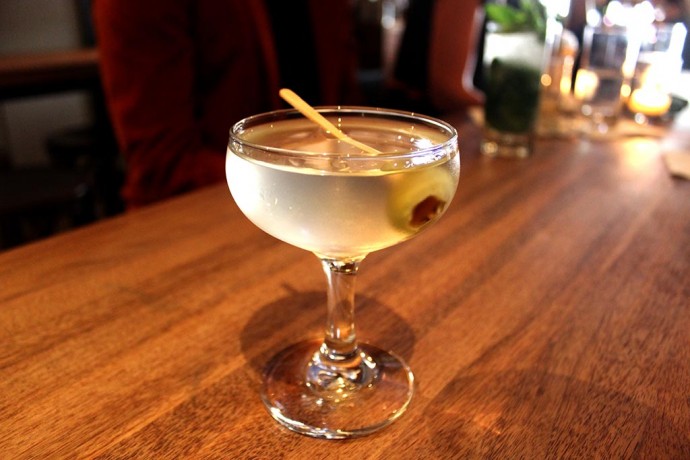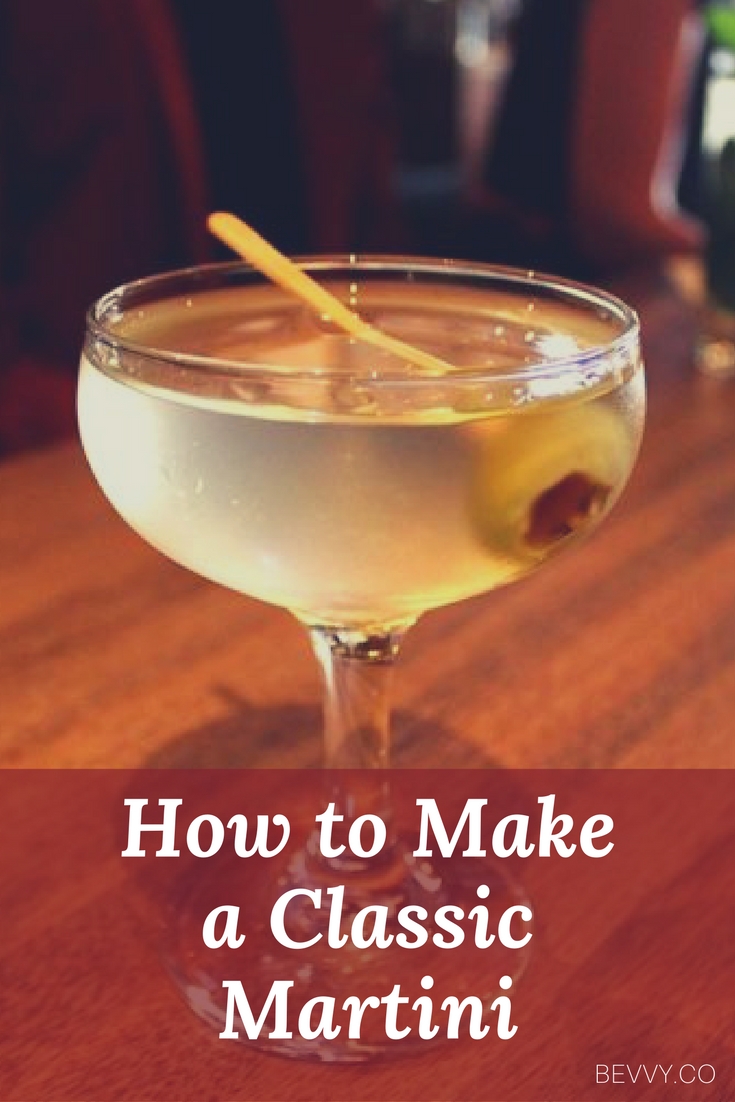Few drinks manage to incite heated, nigh-theological debates as regularly as the Martini Cocktail. For whatever reason, this drink seems to bring the recipe zealots out of the woodwork. The best explanation is probably the fact that the ingredients, proportions, and general philosophy behind the drink have changed pretty drastically since it was first invented, leading to a whole host of Martini drinkers who proclaim their mixture of choice the “right way” to do it.
The truth is, there are dozens of right ways to make a Martini—it really just depends on your palate and the time period you’re trying to emulate. Want to make a Martini hearkening back to its invention in the late 1800s? You’ll need to whip up a drink made with Old Tom gin, sweet Italian vermouth, and Peruvian bitters. Looking for something Roger Sterling might drink in Mad Men? Vodka, dry vermouth, and olives come into play. It’s really all a matter of taste.
But, since we wanted to pick a representative recipe for the first installment in our series, here we’ll teach you how to make a Dry Martini circa 1900. Our article on the history of the drink will delve deeper into why we chose this one, but the short version is that it strikes a nice balance between the sweet concoctions of the Gilded Age and contemporary Martinis that are little more than cold gin with a twist.
The Dry Martini
1 – The Glass
The Martini glass is about as iconic as it gets when it comes to cocktails. While technically a derivative of the generic cocktail glass, it’s safe to say that this beauty has carved out a place of its own and usurped the original. And it’s not all just good looks—the Martini glass is a functional vessel. First, as with all cocktail glasses, it features a stem. When drinks are served up (that is, stirred or shaken to chill and served without ice) they run the risk of being warmed up by the drinker’s hand, which is prevented by holding the stem of the glass. Second, the wide mouth creates a large surface area for the gin to open up and present its botanical aromas, which is key to this spirit-forward cocktail.
2 – The Gin
You should always use a strong, aromatic gin in a Dry Martini. And, because this is really the focal point of the drink, it’s best not to cheap out. London dry gins like Ford’s, Bombay, and Tanqueray are great options that blend well with a dry vermouth.
3 – The Vermouth
Vermouth may be the most universally misunderstood ingredient in American drinking culture. First and foremost, it’s important to remember that vermouth is a fortified wine. That means that, once opened and exposed to oxygen, it will oxidize pretty rapidly and start tasting like vinegar after a few months. Because people tend to let their Martini & Rossi sit on the shelf for years, it’s become a pervasive myth that vermouth is an unpalatable mess. In reality, it’s a fantastic ingredient that can even be sipped on its own when the mood strikes.
Using dry (typically French) vermouth instead of sweet (typically Italian) vermouth is what gives this cocktail its name and distinctive character. There are numerous brands on the market these days, but our favorite tends to be Noilly Prat Extra Dry. Dolin Vermouth de Chambéry Dry is another good option, and Martini & Rossi Extra Dry will do in a pinch. Rather than using a stingy 5:1 ratio of gin to vermouth, a classic 1:1 ratio (or 2:1, if you’re really a fan of gin) highlights the best of both primary ingredients. For a typical Martini, this amounts to an ounce and a half each.
4 – The Bitters
Bitters often get left out of contemporary Martinis, and while they’re optional we suggest giving them a try. Classic, early-20th century recipes almost always call for them, as they tie the other ingredients together nicely and add a subtle extra layer to the bouquet. For a Dry Martini, use a single dash of orange bitters.
5 – The Twist
Using a channel knife or vegetable peeler, cut a segment of peel from an orange or lemon (if you’re using orange bitters, go with the former). Unlike the more rugged Old-Fashioned, the Martini tends to look better with a thin, clean-cut twist.
6 – The First Sip
Add the gin, vermouth, and bitters to a mixing glass filled with ice and stir until chilled. After about thirty seconds—or longer, if you like your Martini more watered-down—strain it into a chilled Martini glass. Squeeze the orange twist over the surface of the drink to express its essential oils, rub it around the rim of the glass, and finally rest it neatly on the edge like a sunbather dipping their feet in a pool.
What you’ve got now is an elegant classic that even the crankiest of Martini aficionados would agree is an excellent tipple. Enjoy the wafting botanicals from the gin and citrus, and if anyone gives you a hard time about using bitters or too much vermouth, we’ve found it’s best just to nod, smile, and enjoy your drink.




